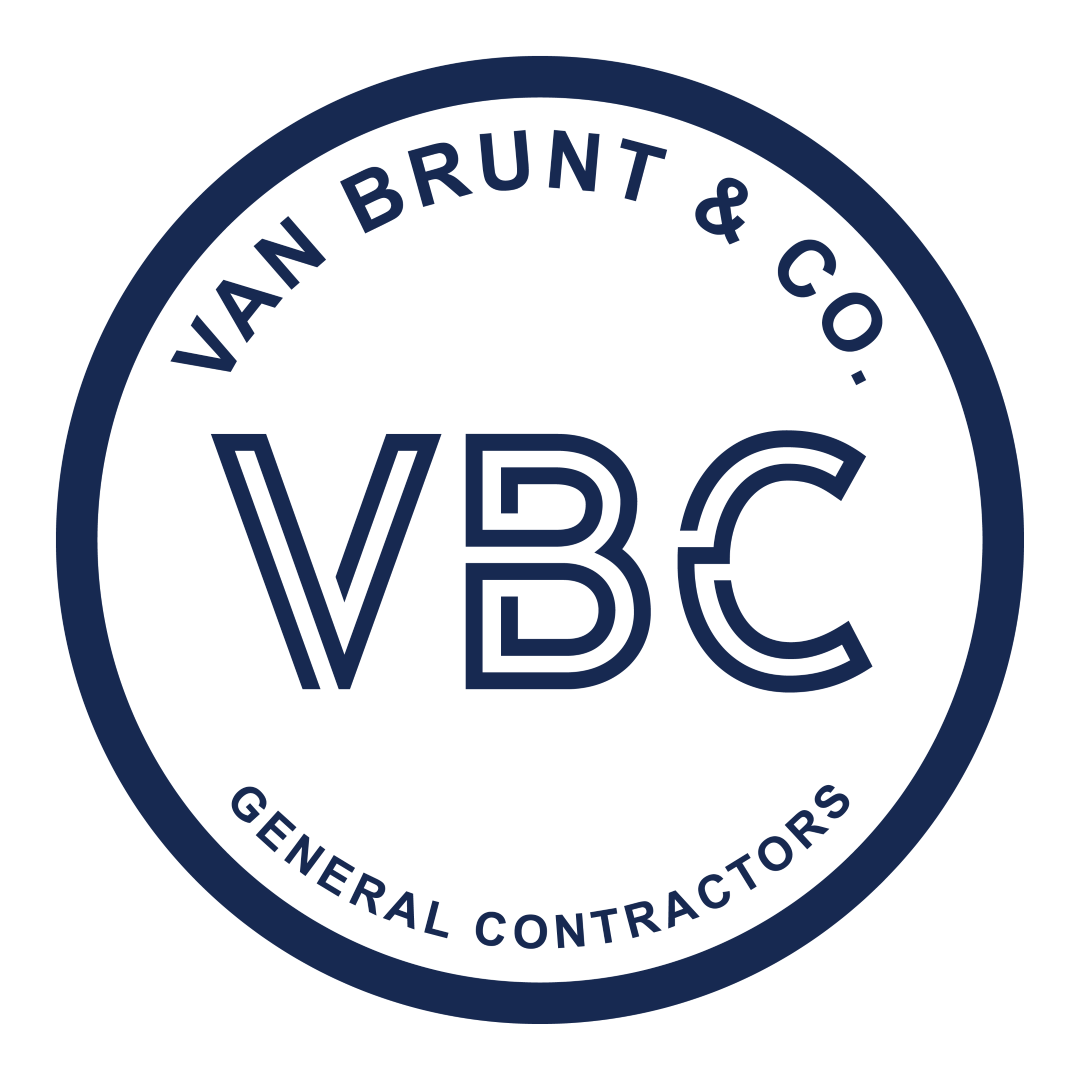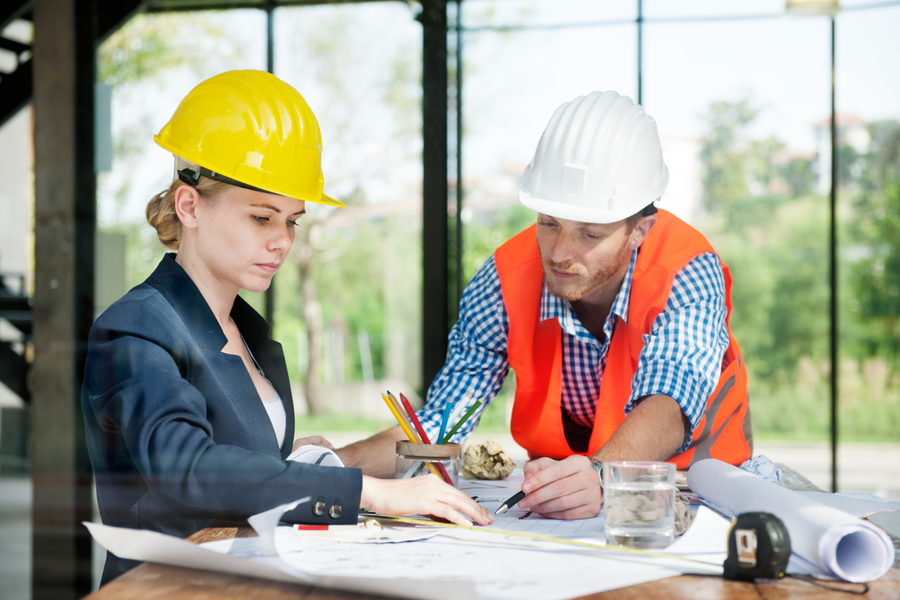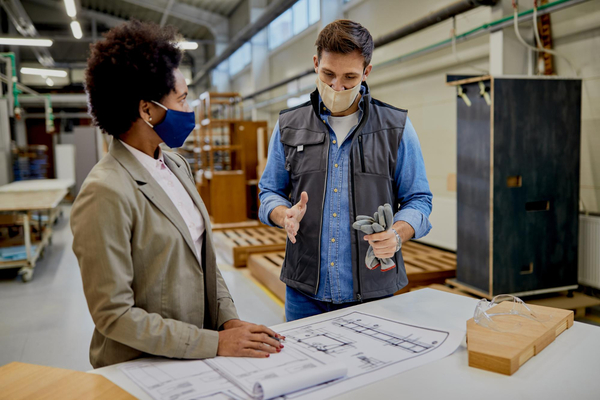Energy efficiency in retail construction is more than just a trend—it is a strategic approach to reducing operational costs and creating a sustainable business model. A well-designed store layout not only improves traffic flow and product visibility but also plays a crucial role in optimizing energy use. By integrating smart construction techniques, retailers can build spaces that minimize energy waste while enhancing the overall shopping experience.
Beyond aesthetics, energy efficiency in retail construction involves using high-performance materials and advanced systems to lower consumption. Upgrading insulation, incorporating LED lighting with automated controls, and installing energy-efficient HVAC systems can make a significant difference in long-term cost savings. Retailers who prioritize these energy-smart solutions create stores that are not only cost-effective but also environmentally responsible and adaptable for future growth.
What Is Retail Construction Design?
Retail construction design is the process of creating a functional, visually appealing, and efficient commercial space tailored to the needs of both customers and retailers. It involves careful planning of store layout, signage placement, lighting configurations, and fixture selection to ensure a seamless shopping experience. Every detail, from traffic flow to product displays, is strategically designed to maximize engagement and encourage sales.
Beyond aesthetics, retail construction design integrates essential engineering systems that enhance sustainability and reduce long-term operational costs. Elements such as HVAC optimization, energy-efficient lighting, and well-planned MEP systems contribute to a comfortable and eco-friendly shopping environment. By incorporating these sustainable practices, retailers not only cut expenses but also align with modern expectations for environmental responsibility.
A well-executed retail construction design blends form and function, ensuring that the store is both attractive and efficient. Smart planning minimizes wasted space, improves customer movement, and enhances overall energy performance. By focusing on both design elements and engineering best practices, retailers can create spaces that drive sales, improve customer experiences, and support long-term business success.
Best Practices for Energy Efficiency in Retail Construction Design
Energy efficiency in retail construction is essential for reducing costs and creating a sustainable business model. Strategic upgrades in equipment, lighting, and HVAC systems can significantly lower energy consumption while maintaining a comfortable shopping environment. By implementing smart design choices, retailers can enhance store performance, improve operational efficiency, and build a more eco-friendly retail space.
Upgrade to Energy-Efficient Equipment
Investing in modern, high-efficiency equipment is one of the most effective ways to reduce energy consumption in retail construction. Older systems, such as HVAC units and refrigeration equipment, often operate inefficiently and drive up utility costs. By replacing outdated systems with energy-efficient models, retailers can cut energy use, lower maintenance costs, and enhance overall store performance.
Beyond energy savings, newer equipment with smart energy management features allows retailers to optimize performance. While upfront costs may seem high, inefficient equipment often leads to higher long-term expenses. Right-sizing HVAC systems and refrigeration units to match store needs prevents unnecessary energy waste and improves operational efficiency.
Selecting the appropriate system size ensures that heating, cooling, and ventilation operate efficiently. Oversized systems consume excessive energy, while undersized units struggle to maintain a comfortable environment. Proper planning and energy-conscious investments ensure long-term sustainability and reduced operational costs.
Implement Energy Optimization Strategies
Retailers can maximize energy efficiency by implementing smart zoning and control strategies. Dividing stores into different energy zones based on heating, cooling, and lighting needs allows for more targeted energy use. This approach prevents unnecessary energy waste while maintaining comfort in various store sections.
Advanced control systems play a key role in optimizing energy use. Smart automation tools can adjust lighting, HVAC performance, and ventilation in real-time based on occupancy and environmental conditions. Demand-controlled ventilation (DCV) systems further enhance efficiency by adjusting airflow according to indoor air quality and foot traffic.
By integrating these strategies, retailers can significantly lower their energy costs and reduce their environmental impact. Combining smart energy management with equipment upgrades ensures that stores remain sustainable and cost-effective. A well-optimized store not only saves energy but also improves the overall shopping experience.
Optimize Lighting for Efficiency and Impact
Lighting is a crucial component of retail store design, impacting both operational costs and customer experience. Proper illumination enhances product displays, improves visibility, and creates an inviting atmosphere for shoppers. However, inefficient lighting systems can lead to excessive energy consumption and unnecessary expenses.
Switching to LED lighting is a simple yet highly effective way to improve efficiency. LED bulbs last up to 15 times longer than incandescent bulbs and consume significantly less energy. Retailers can further enhance energy savings by incorporating motion sensors, dimmers, and daylighting strategies to reduce unnecessary power usage.
A well-planned lighting system balances energy efficiency with optimal brightness. Smart lighting controls ensure that areas are illuminated as needed, reducing waste while maintaining a visually appealing environment. By investing in energy-efficient lighting solutions, retailers can cut costs while improving the overall store ambiance.
Prioritize Commissioning for Peak Performance
Commissioning is a critical step in ensuring that all mechanical, electrical, and plumbing (MEP) systems perform at their highest efficiency. Proper testing and optimization of HVAC, lighting, and refrigeration systems prevent energy waste and costly inefficiencies. This proactive approach leads to reduced operational expenses and a lower carbon footprint.
Ongoing monitoring, known as continuous commissioning, helps maintain peak system performance. If inefficiencies are detected, adjustments can be made remotely or through on-site servicing before they escalate into larger issues. Regular system evaluations ensure that all equipment functions efficiently over time.
Lighting systems should be a top priority during commissioning, as they represent one of the largest energy expenditures in retail spaces. Ensuring that lighting fixtures are properly calibrated can significantly reduce waste while maintaining optimal brightness levels. A well-commissioned retail store is not only energy-efficient but also provides a superior shopping experience.
Stay Flexible in Retail Store Design
A well-designed retail store should allow for future modifications and adaptations. Flexibility in store layouts ensures that retailers can easily adjust to evolving market trends, technological advancements, and operational needs. A rigid layout can lead to costly renovations, whereas a forward-thinking design enables easier reconfigurations.
Strategic infrastructure placement plays a key role in maintaining flexibility. Allocating dedicated spaces for electrical gear and remote panels ensures easier access for maintenance and minimizes the risk of expensive updates in the future. Thoughtful planning allows for seamless store upgrades and renovations when needed.
Retailers can also benefit from modular fixtures and adaptable layouts that accommodate changing inventory and seasonal displays. A store designed with flexibility in mind reduces disruptions and operational downtime. Future-proofing the retail environment ensures long-term sustainability and cost-effectiveness.
Integrate Green Building Codes
Staying compliant with evolving green building regulations is essential for energy-efficient retail construction. Many codes now require the implementation of energy recovery systems, which capture waste energy to improve heating and cooling efficiency. These systems help reduce overall energy demand while lowering long-term operational costs.
Energy-efficient heating and cooling technologies, such as variable refrigerant flow (VRF) systems, are increasingly being adopted in retail spaces. These systems adjust energy output based on store occupancy and environmental conditions, reducing waste and improving efficiency. The ability to control temperatures separately in different areas enhances both comfort and sustainability.
By integrating green building codes into retail construction design from the start, businesses can avoid costly future modifications. Implementing sustainable practices not only benefits the environment but also strengthens brand reputation and long-term profitability. Prioritizing eco-friendly solutions helps retailers align with modern consumer expectations.
Plan the Fire Protection System Carefully
Retailers must consider fire protection as an essential part of their store design. Fire protection systems should comply with regulations that determine the required level of fire safety based on store layout, product types, and storage arrangements. Ignoring fire protection standards can lead to safety risks and costly compliance issues.
Stores that house high-density storage, plastics, or flammable materials require specialized fire suppression measures. Properly assessing inventory types and stacking heights ensures that fire protection systems meet safety standards. A well-planned fire protection system reduces the risk of damage while ensuring regulatory compliance.
Different retail formats may require different levels of fire protection. Warehouse-style stores, for instance, may need higher-density sprinkler systems than smaller retail spaces. Consulting fire protection experts during the design phase ensures that all safety measures are properly integrated from the beginning.
Utilize Energy Management Systems
Energy management systems (EMS) provide real-time data on energy consumption, allowing retailers to optimize their store operations. These systems centralize monitoring of HVAC, lighting, and refrigeration systems to prevent energy waste. Businesses that implement EMS often see significant reductions in energy costs and a boost in operational efficiency.
With EMS in place, facility teams can detect and address inefficiencies before they lead to increased expenses. If abnormal energy consumption patterns arise, remote adjustments can be made to prevent costly system failures. This proactive approach helps retailers maintain stable energy performance while avoiding unnecessary expenses.
By investing in EMS technology, retailers gain full control over their energy use while enhancing sustainability. Continuous monitoring ensures that every system operates at peak efficiency, reducing both costs and environmental impact. An EMS-driven approach is key to achieving long-term energy efficiency in retail construction design.
Key Takeaways
Enhancing energy efficiency in retail construction requires a combination of smart design, sustainable building practices, and advanced technology. By integrating energy-efficient equipment, optimizing space usage, and adopting strategic lighting solutions, retailers can create cost-effective and environmentally responsible stores that improve both customer experience and operational performance.
A forward-thinking approach to retail construction not only reduces energy costs but also ensures long-term adaptability and sustainability. Investing in flexible layouts, green building codes, and energy management systems helps retailers stay ahead of evolving industry standards while fostering a more efficient and profitable business environment.
Frequently Asked Questions
What are the biggest challenges in retail construction design?
Retail construction design comes with challenges like optimizing limited space, maintaining energy efficiency, and ensuring compliance with evolving regulations. Balancing aesthetics with functionality while integrating sustainable and cost-effective solutions requires strategic planning and flexibility.
How can retailers reduce construction costs without compromising quality?
Retailers can cut costs by selecting energy-efficient materials, repurposing existing infrastructure, and implementing modular store layouts. Investing in long-term solutions like LED lighting and smart HVAC systems also leads to significant savings on operational expenses.
What role does technology play in modern retail construction?
Technology enhances efficiency in retail construction through smart automation systems, energy management tools, and real-time monitoring of HVAC and lighting. These innovations help optimize energy use, reduce waste, and improve store functionality without manual intervention.
How does retail construction impact the customer experience?
A well-designed retail space improves customer flow, enhances product visibility, and creates a more inviting shopping environment. Smart construction choices, such as optimized lighting and flexible layouts, contribute to a seamless and enjoyable experience for shoppers.
What sustainability trends are shaping the future of retail construction?
Retailers are increasingly adopting eco-friendly building materials, energy recovery systems, and net-zero energy designs to reduce their environmental footprint. Green building codes and renewable energy integration are becoming essential factors in modern retail construction projects.
Users Also Say
J*****68
A retail store is only as efficient as the team that builds it.
Retail construction companies play a massive role in ensuring stores are designed with both functionality and energy efficiency in mind, making them essential partners for any successful retail business.
Al**x7
Having worked closely with retail construction companies, I’ve seen firsthand how essential they are to creating efficient, well-optimized store spaces. One project I was involved in transformed a poorly designed store into a streamlined, energy-efficient space just by reworking the layout and upgrading lighting and HVAC systems.
The expertise of a solid construction team made all the difference, they knew exactly how to maximize square footage while ensuring compliance with safety and energy standards. We also integrated flexible fixtures, allowing the store to easily adapt to seasonal changes and new product lines. Without skilled retail construction professionals, many businesses would struggle with wasted space, high energy costs, and inefficient layouts.
A well-planned construction strategy doesn’t just improve store aesthetics; it directly impacts functionality, customer flow, and long-term profitability.
M***g*n
Picture a retail space built without proper planning, narrow aisles, inefficient lighting, and HVAC systems that constantly overwork. Now, imagine a store designed by professionals who understand space optimization, using strategic layouts, energy-efficient systems, and durable materials that save costs in the long run.
That’s the difference a great retail construction company makes, ensuring businesses operate smoothly while enhancing customer experience.



